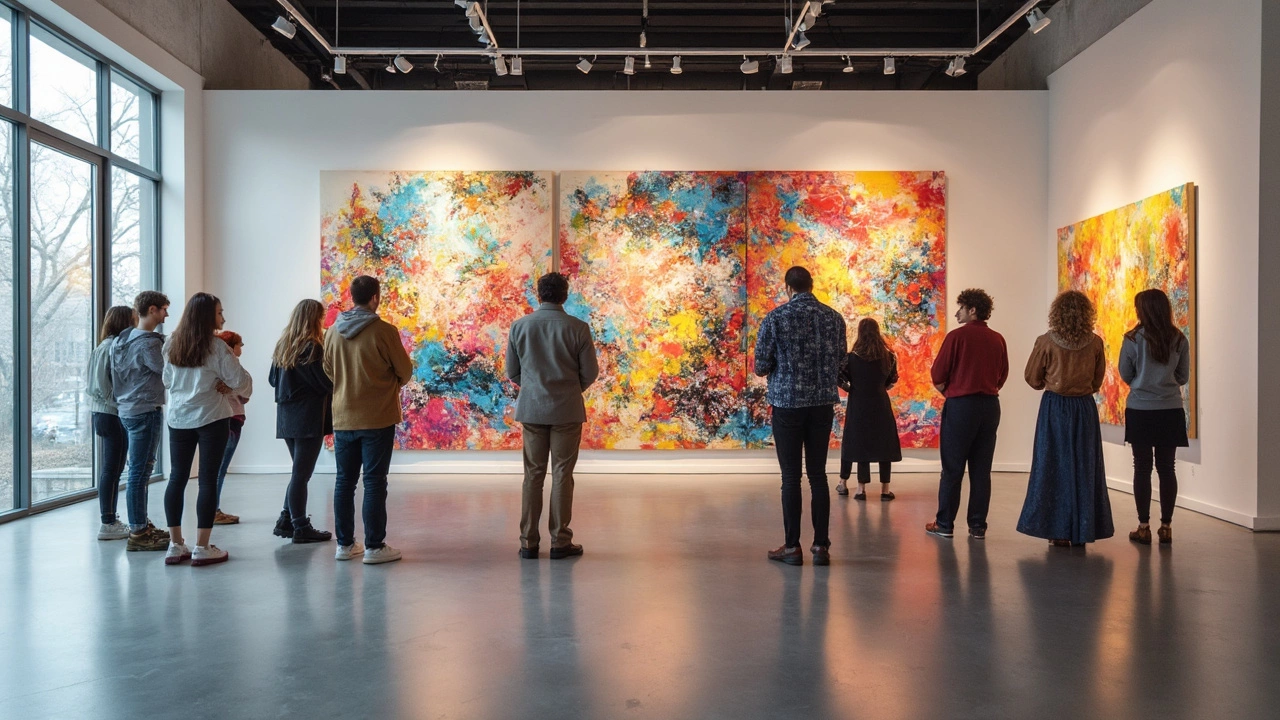Visual Language: How Art Talks Without Words
When you stare at a painting, you aren’t just looking at colors on a canvas. You’re reading a silent conversation the artist set up with lines, shapes, textures and colour. That whole system is called visual language – the toolbox artists use to say something without writing a single word.
Key Elements of Visual Language
Every piece of visual art has a few building blocks that work together like a sentence. Colour carries mood – warm reds can feel angry or passionate, while cool blues calm the viewer. Line gives direction; a jagged line can create tension, a smooth curve can calm. Shape and form define objects – a circle feels friendly, a square feels stable.
Texture adds depth. Rough brushstrokes make a surface feel gritty, smooth blending feels soft. Composition is the arrangement of all these parts. The rule of thirds, for example, helps place the main subject off‑centre for a more dynamic look – a tip we explore in our guide on landscape painting.
Even something as simple as an eye in a portrait can change the whole story. Artists often focus on eyes because they pull the viewer in and create an emotional link. Our article on "Eyes in Portraits" shows how a tiny detail can give a painting its power.
Using Visual Language in Your Work
If you want your art to speak, start by thinking about the feeling you want to send. Want excitement? Use bold, saturated colours and sharp angles. Want calm? Choose muted tones and gentle curves. Test it out – paint a small swatch and see how it makes you feel.
Next, think about hierarchy. What should the viewer see first? Place that element on a strong focal point, maybe at an intersection of the thirds grid. Then guide the eye with lines or colour contrasts. This technique works in both abstract pieces and realistic portraits.
Abstract art is a great playground for visual language. Even when there’s no recognizable object, colour, line and texture still tell a story. Our piece on "What Does Abstract Art Really Mean?" breaks down how artists use these tools to stir emotion without a clear scene.
When you mix mediums, the language changes a bit. Oil painting lets you blend colours for smooth transitions, while acrylic dries fast and is great for crisp edges. Knowing each medium’s strengths helps you choose the right visual words for your message.
Lastly, don’t forget the cultural side. Modern and contemporary styles like digital, AI or NFT art bring new symbols into the visual vocabulary. Understanding current trends can keep your work fresh and relatable, as discussed in our overview of "Most Modern Art Styles".
So next time you pick up a brush or a tablet, think of yourself as a writer in a silent language. Choose your colours, lines and shapes with intention, and watch how your audience starts to read what you’re saying without ever hearing a word.

29 May 2025
This article breaks down the real reason abstract art works and what makes it stand out. It explains how abstract art isn’t about painting real objects but about ideas, feelings, and the freedom to create. Get insights into how artists use color, form, and movement to connect with us in surprising ways. You'll pick up straight-talking facts, a look at famous abstract artists, and tips for understanding and even making your own abstract art. Perfect if you want to 'get' abstract art without feeling lost or overwhelmed.
Continue reading...
